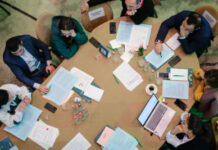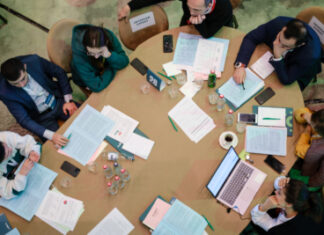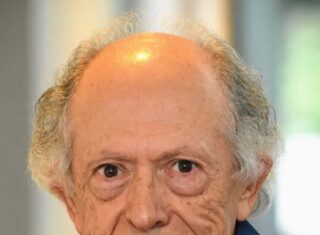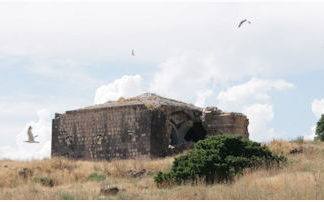By Aram Arkun
Mirror-Spectator Staff
WATERTOWN — Armenians have not only lost lives but also irreplaceable cultural artifacts as a result of acts of violence over the centuries. Now, there may be a way to recreate some of this lost heritage, at least in the digital realm. Prof. Harold Short is part of a research team attempting to restore some of the Armenian past, starting with the cemetery of khachkars or cross-stones in Julfa systematically destroyed by Azerbaijanis. Short was in Watertown recently, and provided some insights into the project, officially called the Julfa Cemetery Digital Repatriation Project.
He said that the project was initiated by co-director Dr. Judith Crispin, an Australian musician, photographer and intellectual. While she was running the Manning Clark House, a center in Canberra, Australia, bequeathed by the family of Clarke for exhibitions and cultural events, she came to learn from Armenians about the Armenian Genocide and the recent destruction of the Julfa cemetery. At its peak this cemetery contained over 10,000 medieval khachkars on the banks of the Arax River between Iran and Nakhichevan. By 1998, there were some 2,000 left standing prior to the coordinated Azerbaijani campaign of destruction. UNESCO has included the khachkars on its list of Intangible Cultural Heritage.
Incensed at this loss, and stunned by the beauty of the demolished khachkars, Crispin met with Armenian researcher Vicken Babkenian and the Armenian bishop in Sidney, and sought their support for attempting to use modern technology to restore the cemetery in a virtual but realistic manner. She looked for an academic home for the project to work with the Manning Clark House. The Australian Catholic University thought it very worthwhile. The vice chancellor of that university asked Short at this point to join in as a digital humanities specialist. The university’s Institute for Social Justice and the Institute for Religion and Critical Inquiry served as host structures for the projects.
Short, with an educational background in the humanities and mathematics, computing and systems, was head of the Department of Digital Humanities at King’s College, London, until his retirement in September 2010, and has collaborated in a large number of multidisciplinary projects. He is responsible, he said, for the technical side of things, and managing the people doing the work, while Crispin will coordinate the historical and cultural research necessary. This is an interdisciplinary project, with archaeologists, historians, photographers, theologians and sound and digital humanities technical specialists just some of the experts required.









